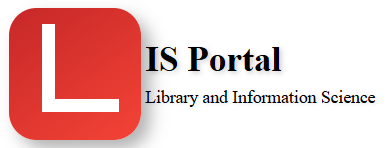UNESCO (United Nations Educational, Scientific and Cultural Organization)
The constitution of United Nations Educational, Scientific and Cultural Organization (UNESCO), signed on 16 November 1945, came into force on 4th November, 1946 after ratification by 20 countries including India.
UNESCO promotes library services through various initiatives aimed at enhancing access to information and knowledge and supporting the development of library services globally. Some of the key ways in which UNESCO promotes library services include:
-
Development of library networks: UNESCO supports the development of library networks, which enable libraries to share resources and collaborate on initiatives to enhance access to information and knowledge.
-
Capacity building and training for librarians and library staff: UNESCO provides training and capacity building programs for librarians and library staff to help them better serve their communities and enhance the quality of library services.
-
Promotion of digital libraries: UNESCO works to promote the development of digital libraries, which provide access to a wide range of information and knowledge resources through the use of technology.
-
Support for public libraries: UNESCO supports the development of public libraries and encourages their use by the general public as a means of promoting literacy, lifelong learning, and cultural exchange.
-
Encouragement of library use: UNESCO promotes the use of libraries and encourages the general public to take advantage of the resources and services that libraries have to offer.
The key principles of the Library Manifesto include:
-
Access to information and knowledge: The manifesto states that access to information and knowledge is a fundamental right, and that libraries play a critical role in ensuring this access.
-
Universal availability of library services: The manifesto states that library services should be available to all, regardless of race, gender, social status, or economic background.
UNESCO publishes a wide range of materials, including:
-
UNESCO World Heritage: A series of books and monographs on World Heritage sites and the cultural and natural heritage of countries around the world.
-
Culture, Education, and Science Reports: Reports and studies on the state of culture, education, and science in different countries and regions, providing insights into current trends and challenges in these fields.
-
Scientific and Technical Publications: Conference proceedings, journals, and other scholarly materials on various scientific and technical topics, including environmental science, engineering, and technology.
-
Documents and Declarations: Official documents and declarations produced by UNESCO, including the Universal Declaration of Human Rights and the Convention for the Safeguarding of the Intangible Cultural Heritage.
Some Key Facts
- CDS/ISIS (Integrated Set of Information Systems) is a software application developed by UNESCO that was originally designed to manage library collections.
- The “Library Manifesto” is a set of principles and guidelines for library services, developed by UNESCO in 1994.
- The General Information Programme (GIP) is one of the programs of the United Nations Educational, Scientific, and Cultural Organization (UNESCO). The GIP was established in 1985 with the goal of promoting the free flow of information and knowledge to help support development and cultural diversity.
-
The preservation of digital heritage is an important priority for UNESCO. With the increasing use of digital technologies, there is a growing need to ensure that our digital heritage is preserved for future generations. Digital heritage includes digital documents, images, audio and video files, websites, and other digital content that is created and used today.
UNESCO is actively working to address the challenges of digital heritage preservation through a range of initiatives, including:
-
Guidelines and Recommendations: UNESCO has developed guidelines and recommendations to help countries and organizations preserve their digital heritage, including the Recommendation on the Preservation of, and Access to, Documentary Heritage Including in Digital Form.
-
Technical Assistance: UNESCO provides technical assistance to countries and organizations to help them preserve their digital heritage, including training, capacity building, and the provision of tools and resources.
-
- UNESCO recommends a range of software tools for the preservation of digital heritage, including open-source and proprietary software. Some of the software tools that are commonly used for digital preservation include:
-
Archivematica: A free, open-source digital preservation system that provides a comprehensive suite of tools for managing and preserving digital assets.
-
BitCurator: An open-source digital forensics toolkit designed specifically for the preservation of digital heritage.
-
Digitool: A proprietary digital asset management system that provides a range of tools for preserving and accessing digital assets.
-
Rosetta: A proprietary digital preservation system that provides a range of tools and services for preserving digital assets over the long-term.
-
ArchiveSpace: An open-source archival information management system that provides a range of tools for managing and preserving digital assets.
